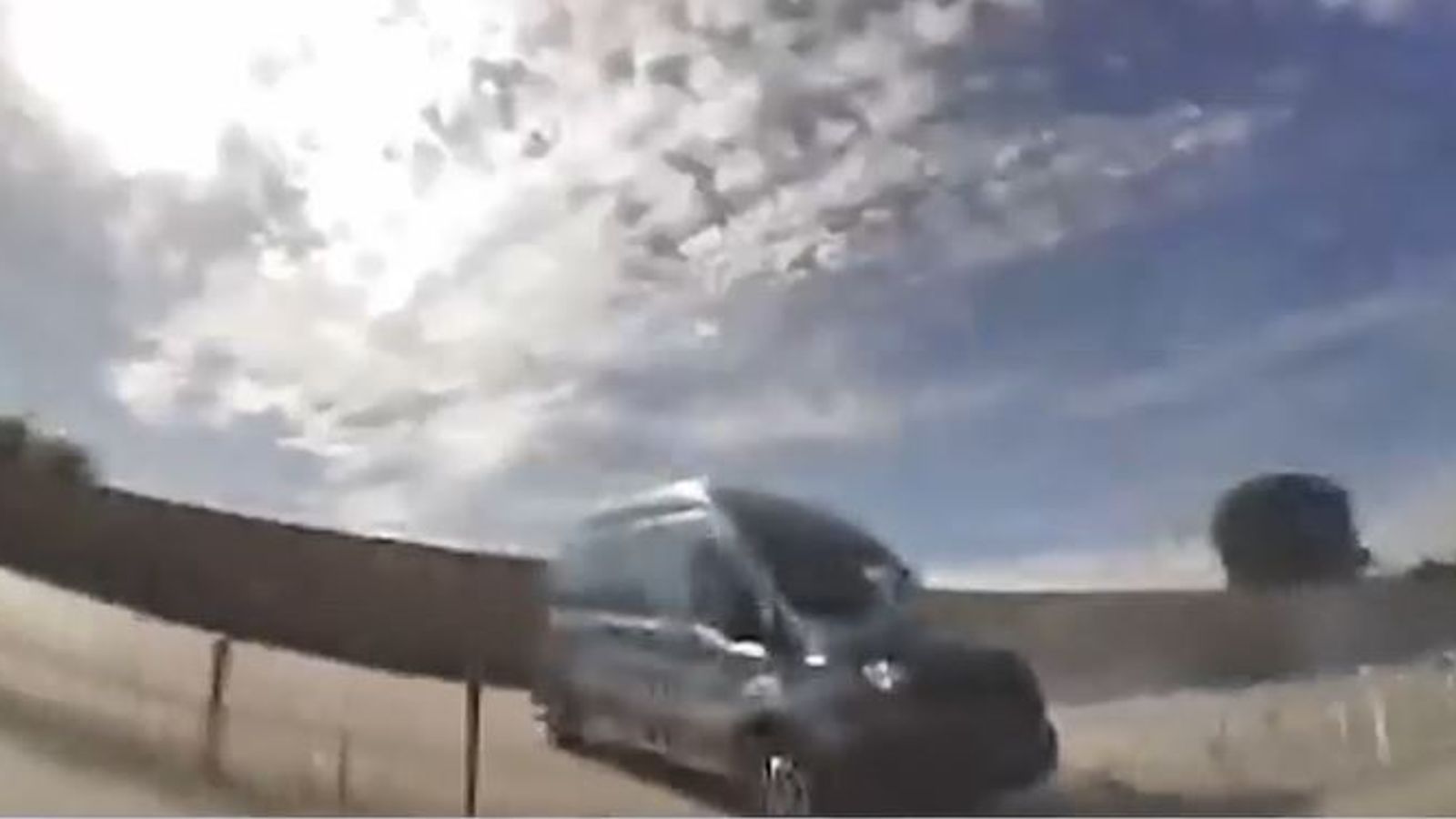Images of George Floyd being treated in the back of an ambulance, after a police officer knelt on his neck for more than nine minutes, have been shown to a jury.
The distressing pictures were viewed by jurors during the trial of Derek Chauvin who is accused of murdering the unarmed 46-year-old black man in Minneapolis last year.
Mr Floyd can be seen lying unconscious in the back of the ambulance as he was flatlining.
Paramedic Seth Bravinder was one of the first responders on the scene on 25 May last year.
He told the court how when he first arrived he saw Mr Floyd lying on the ground with multiple police officers on top of him.
Mr Bravinder said it wasn’t clear at first if there was a struggle but he later realised the man was “unresponsive”.
The paramedic’s colleague soon ascertained Mr Floyd was likely in cardiac arrest and he was moved onto a stretcher.
Mr Bravinder said he had to cradle Mr Floyd’s head to stop it hitting the floor because it was “limp”.
Mr Floyd was then moved into the ambulance and a police officer helped with chest compressions but he had “flatlined”, the jury was told.
Prosecutor Erin Eldridge asked whether a delay in getting medical help for Mr Floyd may have lessened his chance of surviving.
Mr Bravinder said it is “important” to start resuscitation efforts as soon as a patient’s pulse stops, and that a delay in giving treatment is “not good for the outcome”.
Derek Smith, a paramedic who was another of the first responders, said he thought Mr Floyd was dead when he arrived at the scene.
Mr Smith saw three officers on top of Mr Floyd.
The paramedic told the court: “He wasn’t moving, I didn’t see any chest rise or fall.”
Mr Smith added that he then checked for a pulse but did not find one.
The paramedic continued: “In lay terms, I thought he was dead”.
Mr Smith also said he had to tell an officer to “move out of the way” while he was trying to load Mr Floyd onto a stretcher.
The paramedic added he had to remove Mr Floyd’s handcuffs to begin treating him, and that he noticed superficial injuries to his shoulder and face.
The court was also shown body-worn footage of Mr Floyd appearing unresponsive before being moved onto a stretcher.
The video showed Mr Floyd face-down on the ground with police officers still holding him down.
The images were shared after Mr Floyd’s girlfriend Courteney Ross tearfully told the story of how they first met at a Salvation Army shelter in 2017.
The 45-year-old added that Mr Floyd was a security guard with “this great Southern voice, raspy”.
She also recounted how they both struggled with opioid addiction.
Ms Ross said: “Both Floyd and I, our story, it’s a classic story of how many people get addicted to opioids. We both suffered from chronic pain. Mine was in my neck and his was in his back.
“We both had prescriptions. But after prescriptions that were filled and we got addicted and tried really hard to break that addiction many times.”
While being cross-examined by the defence, Ms Ross was asked about when Mr Floyd was taken to hospital after suffering an overdose in March 2020.
The defence is expected to argue Mr Floyd died partly due to drugs following his arrest two months later.
Prosecutors put Ms Ross on the stand as part of an effort to humanise Mr Floyd in front of the jury and portray him as more than a crime statistic.
Chauvin has pleaded not guilty to murder and manslaughter charges.
His lawyers argue Mr Floyd’s death was an overdose caused by the painkiller fentanyl found in his blood during a post-mortem.
George Floyd Killing: The Trial – We will bring you live continuous coverage of court proceedings in the trial of Derek Chauvin on our website, app, YouTube and Sky Pop Up Channel on 524



